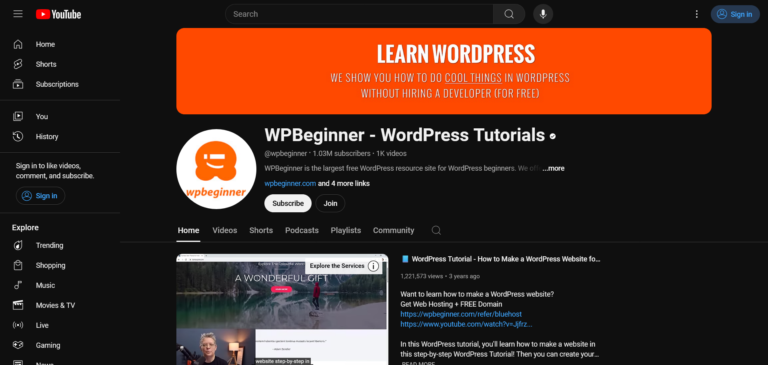Top Tips for Choosing the Perfect Domain Name for Your Business Website
Key Take-aways
- Stick with .com: It remains the most credible and memorable domain extension.
- Use Keywords: Incorporate relevant keywords to boost SEO and clarity for users.
- Keep It Short and Simple: Aim for a domain under 15 characters, easy to pronounce and spell.
- Avoid Hyphens and Double Letters: Reduces confusion and minimizes typos.
- Choose a Brandable Name: Ensure your domain is unique and not trademarked.
- Leave Room for Expansion: Avoid overly specific domains that limit your business’s growth.
Picking the right domain name is one of the most critical decisions you’ll make when establishing your online presence. It serves as your digital identity, influencing how potential customers perceive your brand and affecting your SEO efforts. A well-chosen domain name not only attracts visitors but also builds trust and authority in your niche. Let’s explore eight essential tips that will guide you through choosing the best domain for your business website, ensuring it’s memorable, brandable, and effective in search engines.
1. Stick with a .com Extension
The domain extension you choose plays a crucial role in how people perceive your website. While it might be tempting to use new extensions like .blog or .shop, the .com extension remains the gold standard. Why? It’s simple—.com is the most established and recognized domain extension worldwide. When users think of a website, they naturally default to adding .com at the end, making it easier for them to recall and access your site.
Using a .com domain also lends credibility. People associate it with trustworthy and professional websites, which is why it remains the preferred choice for businesses. Even if you’re tempted to use an industry-specific extension (like .photography or .tech), remember that the vast majority of web traffic still gravitates toward .com. If you are a non-profit, using .org is appropriate, but for businesses seeking to establish authority and reach a wide audience, .com is the best option.
2. Use Proper Keywords
Incorporating keywords into your domain name can significantly boost your SEO efforts. Keywords help search engines and users quickly understand the nature of your website. For example, if you run a floral shop, using words like “flowers,” “blooms,” or “florist” in your domain instantly signals what your business is about, potentially giving you a slight edge in search engine rankings.
However, the challenge often lies in finding available domains that fit your keyword needs. Many of the most straightforward keyword combinations are already taken, which is why creativity is key. Consider combining words, using action-oriented phrases, or even merging your main keyword with a brandable modifier. For instance, if “floraldesign.com” is unavailable, try something like “urbanfloraldesign” or “modernblooms.” These alternatives still incorporate your primary keyword while keeping the name unique and memorable.
3. Keep It Short and Simple
One of the golden rules of domain selection is brevity. A short domain name—ideally under 15 characters—makes it easier for users to remember and type, reducing the risk of errors. Long domains not only look cluttered but also increase the chances of typos, which can drive potential visitors away. Shorter names, on the other hand, convey professionalism and confidence, helping your brand stick in the minds of your audience.
But brevity alone isn’t enough. The domain should also be simple and easy to spell. Avoid using complex words or uncommon spellings that might confuse your audience. Think of popular brands like “Google” or “Amazon”—these names are short, memorable, and easy to spell. Strive to achieve a similar level of clarity and simplicity with your domain name. The simpler and shorter it is, the more likely users will remember it and come back to your site.
4. Make It Easy to Pronounce and Spell
A domain name should be easy to share in conversation, whether you’re networking, advertising, or simply talking to a potential customer. If your domain is difficult to pronounce or spell, you risk losing visitors who misinterpret what they hear or who struggle to type your web address correctly. This is particularly important for word-of-mouth marketing; you want a name that people can effortlessly recall and communicate.
Test your domain idea by sharing it with others verbally and seeing if they can spell it correctly. If they stumble or ask for clarification, it’s a sign that the domain might be too complicated. The goal is to create a name that people can easily share and remember without requiring additional explanation or correction. The more intuitive your domain is, the more successful it will be in attracting and retaining visitors.
5. Ensure It’s Unique and Brandable
Your domain name is a vital part of your brand identity. It should be unique and memorable, distinguishing you from competitors and leaving a lasting impression on your audience. Generic names like “buylaptopsnow.com” may describe what you offer, but they lack character and are easily forgotten. Instead, aim for something that evokes curiosity, tells a story, or creates an emotional connection with your audience.
Additionally, verify that the name you choose isn’t already trademarked by another business. Using a trademarked name could lead to legal issues and brand confusion. Conduct a thorough search using tools like the U.S. Patent and Trademark Office’s online database or international equivalents. The goal is to create a domain that is not only distinctive but also legally safe, setting the stage for a strong and recognizable brand.
6. Avoid Hyphens
While hyphens were once popular in domain names, they are now largely seen as a sign of spammy or low-quality sites. Adding hyphens may also cause confusion; users often forget to include them, which can lead to traffic loss. Imagine trying to verbally share “my-business-site.com” with someone—there’s a good chance they’ll forget the hyphens when typing it out.
Hyphens also detract from the professionalism and flow of a domain name. A clean, unbroken name appears more authoritative and cohesive. Avoid them altogether and aim for a domain that flows naturally. In today’s digital landscape, simplicity and clarity win every time.
7. Steer Clear of Double Letters
Double letters, such as those found in “toolleap.com” or “bussservice.com,” often lead to confusion and typos. When people quickly type in your URL, these double letters can be easily missed or duplicated incorrectly. This not only frustrates users but also leads to a loss in traffic if potential visitors end up on the wrong site.
Where possible, opt for names without these tricky letter combinations. A seamless, straightforward domain ensures that users type your URL correctly and end up exactly where you want them to be. This small detail can make a big difference in maintaining a steady flow of traffic and providing a user-friendly experience.
8. Leave Room for Expansion
As your business grows, your domain name should be flexible enough to accommodate that growth. Avoid names that are too niche or specific, as they may restrict you from diversifying your offerings in the future. For example, if you name your business “orchidblog.com” and later decide to expand your floral offerings beyond orchids, the domain may feel limiting. Instead, choose something broad yet relevant, such as “bloomspot.com,” which allows you to explore various flowers, arrangements, or even related services like event planning.
Think of your domain as a foundation that supports the future of your brand. By leaving room for expansion, you ensure your business can evolve and adapt without needing to rebrand or change your web address, which can be costly and confusing for your existing audience.
Tools for Finding Domain Names
When you’re ready to brainstorm domain names, several tools can help generate ideas and check availability:
- Nameboy: An established domain name generator that suggests names based on one or two keywords you enter. It’s a great way to explore options and find a unique, available domain.
- IsItWP: Another valuable tool that provides domain name suggestions. Simply enter your primary keywords, and it will generate a list of available options, making the selection process more efficient.
Once you find a domain name you love, hold off on registering it immediately. In our next guide, we’ll walk you through how to bundle your domain registration with your hosting plan, often offering the domain for free for the first year. This will save you time and money while ensuring a smooth setup for your business website.

